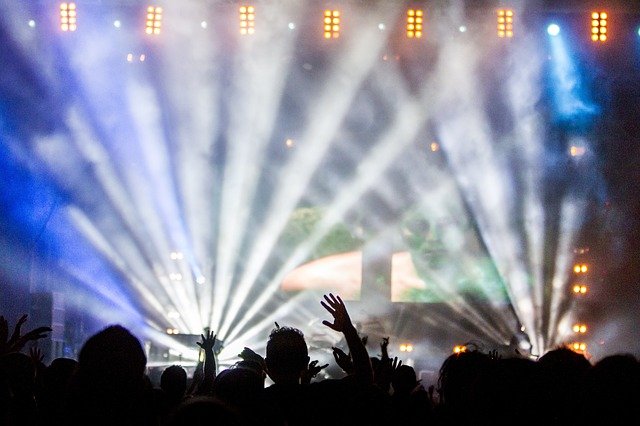Sports and events: Crowd safety considerations
 By Steve Allen
By Steve Allen
Crowds occur everywhere. In your daily commute, at gigs, demonstrations, places of worship, celebrations.
Having spent the past 25 years working with crowds, nationally and internationally, it is abundantly clear to me that no matter what cultural considerations there may be, there are recognised common characteristics associated with crowds no matter why they are forming.
These considerations include our personal goals, for example; getting from A to B and back to A again. Other considerations include the need for families and/or friends to regroup prior to leaving any space, in normal day-to-day scenarios or indeed in any emergency situation.
The crowd’s perception of risk is a significant aspect that should be considered for any emergency situation that may occur. For example, how many of us attend an event thinking something is going to go wrong?
Before Christmas 2015, as a crowd safety consultant to a number of UK events, I was contacted by a few people who had purchased tickets for large groups of under 18-year-olds.
They were voicing concerns about terrorism, partly due to a need to demonstrate due diligence, and partly out of a genuine fear.
However, this perception is not common. The majority of us attend events, go to shopping malls, and commute with the mindset that nothing is going to happen and if it does happen, everything is in place to ensure our safety.
Our goal is to watch the match, see our heroes onstage, buy that piece of clothing and get to our chosen destination. We are conditioned to believe – perhaps through activations of so many malicious alarms in our school days – that any alarm is in fact a false alarm. Social media, in recent years has made a huge impact on crowds who now prefer to film an incident, as opposed to moving to a place of safety. These considerations should be factored in for any suitable and sufficient crowd management and safety plan.
Crowd Profiling
Crowd profiling is an essential component of any crowd safety plan, as it provides a clearer understanding of the crowd, the crowd’s needs, the percentage of persons attending with special needs and the foreseeable issues we may be faced with.
It also has other advantages as it allows us to recognise cultural and language considerations, needs, , the age profile and male/female ratio split. This type of information assists with areas such as toilet requirements, signage, security and staffing levels, merchandise, pick up and drop off points, welfare, medical cover, police, fire safety considerations and advance information provided, as some of the examples.
In the 90s, while touring with the UK band Blur, I saw a young lady in a wheelchair immediately in front of the stage barrier.
I said we had to move her.
“We can’t!” said the venue organisers. “She has rights!”
“Yes,” I said. “So do all the other people behind her, who’ll be impaled on the chair once the band come on stage.”
I spoke to the lady, explained my concerns and moved her to a different location which satisfied her and kept her and everyone else safe.
Showstopping procedures
Historical incidents, case law, guidance, projected capacities, crowd profiles, event duration, location, transport, current intelligence, the type of event, and media, form part of the orientation of the crowd planning process.
Hundreds of thousands of pounds, sometimes millions, is spent on the entertainment yet the impact of a crowd disaster could be catastrophic in terms of brand reputation, finance, the moral compass and indeed liberty, attracting international condemnation. Indeed, a recent crowd incident – initiated by a fire in a nightclub – forced the resignation of a Prime Minister and his Government in Romania following huge protests by some 20,000 people.
The safety of the crowd is a paramount component to the safety and success of any event. I am not a risk averse person by any stretch of the imagination, and have had the benefit of working for some of the most high profile crowd intense events in the world. I have learnt though, that even with the best plans in place, the unexpected can very easily happen and we must be prepared for such eventualities if we are to prevent a catastrophe.
Whilst touring with Oasis, back in the 90s, it was clear that the risk of a crowd related incident was high. I established a procedure where any life-threatening situation could be immediately recognised through ongoing and effective monitoring of the crowd and the show temporarily halted to manage the incident, then restart the show once the incident had been managed.
This procedure was named the Showstop Procedure, which I am proud to say has saved countless lives, is used internationally and is recognised by the HSE.
This procedure is simple, yet very effective and proven contingency, which protects all parties involved: the audience, the artiste, promoters, the venue, sponsors and all brands associated. The Showstop Procedure, serves as an effective tool for incident management for both tangible and intangible incidents.
Steve Allen, FdA, MIFireE, MIFSM, FIRRSM, is an event safety consultant with extensive experience of crowds in the leisure, sporting, and live event industry. Steve provides event, crowd and fire safety services worldwide. He is often asked to attend as guest speaker at event conferences and has designed and delivered bespoke workshops underpinned by years of practical experience of crowds, to those with responsibilities’ of crowd safety. Steve can be contacted at [email protected]
Sports and events: Crowd safety considerations
By Steve Allen Crowds occur everywhere. In your daily commute, at gigs, demonstrations, places of worship, celebrations. Having spent
Roz Sanderson
SHP - Health and Safety News, Legislation, PPE, CPD and Resources Related Topics
Back for 2024: EHS Congress Berlin
Safety & Health Expo becomes part of ‘Anticipate London’ in new launch
Hillsborough disaster: Families of victims profoundly failed, police admit

